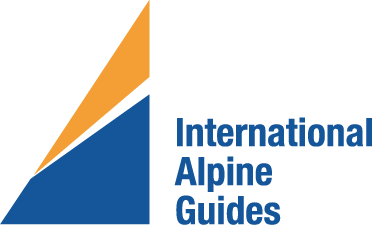EQUIPMENT LIST
Ski Mountaineering Course
All of the items listed below are required and It is extremely important to the success and safety of your course that you bring them all. Weather conditions can vary dramatically and you must be prepared!
The items noted with a * can be provided at no cost by IAG/CAG as noted and are subject to availability. You must notify us no later than 30 days before your trip of any gear you require from us.
Backcountry ski set ups are available for rent at Mammoth Mountaineering in the town of Mammoth Lakes.Any questions give us a call at: 877-686-2546
Ski Gear
Skis
Alpine touring or Telemark skis no wider than 105mm wide underfoot without too much tip and tail rocker.
Skins
Some ski manufacturers make skins pre cut for your skis. Otherwise they need to have coverage over most of the ski. The edge needs to showing and no base showing between the edge of the ski and the skin for about 80% of the skis length.
Bindings
Lightweight alpine touring or telemark bindings. For AT, the pin style toes are the lightest and tour the best.
Ski Boots
Lightweight 2-3 buckle touring boots are the best, but any alpine touring or telemark boot will do.
Ski Crampons
Alpine Touring binding companies all make a ski crampon to fit their bindings. For Tele bindings, there are some adapters that mount to your ski to slide a ski crampon on.
Ski Poles
Technical & Avalanche Safety Gear
Crampons * (We can provide)
Lightweight aluminum 10-point boot crampons are preferred. Some of the best ski boot crampons are aluminum with steel front points.
Ice Axe *
You must have a short ice axe regardless of you height. No longer than 60cm, 50-55cm is preferred. Skiing with a long axe on your pack is not a good idea.
Harness * (We can provide)
Look for a lightweight alpine style harness
Avalanche Probe * (We can provide)
A short probe of 2 meters in length is fine
Avalanche Transceiver * (We can provide)
A simple digital transceiver
Backcountry Shovel * (We can provide)
Lightweight and designed for avalanche rescue
2 Locking Carabiners * (We can provide)
Pear shaped
Other Gear
Headlamp * (We can provide)
Ski strap to connect your skis together
2 One Liter Wide Mouth Water Bottles *
Full Wrap Sunglasses or Glacier Glasses
They must be dark lens full wrap or glacier glasses with side shields. Visible light transmission should be around 6%. By comparison, driving sunglasses have around 20% visible light transmission which is not appropriate.
Ski Goggles
Clothing
For clothing, we emphasize a layering system in which we put on and take off layers of clothing depending on the outside temperature and the level of activity.
Outer Waterproof Shell Jacket (hard shell) with Hood
A waterproof & breathable shell jacket with no additional insulation sewn in. Lightweight is better.
Ski Pant (soft shell)
A lighter weight non-waterproof pant that breathes much better than waterproof pants. This is what you will probably be wearing most of the time
Lightweight Long Underwear Baselayer
Synthetic or Wool.
Lightweight Long Underwear Baselayer Top
Synthetic or wool
Insulating Layer - Lightweight
Fleece or wool
Insulated Parka
Down or synthetic fill puffy parka. Down is lighter.
Warm Hat
Wool or synthetic
Sun Hat or Ball Cap
2 Pairs Socks
Very thin ski socks
Insulated Glove - Mid Weight
Water resistant & wind proof and highly insulated
Lightweight Glove
These do not have to be water resistant. Fleece or soft shell is fine
Buff
Can be used for many things including a neck warmer & face mask
Other Important Items
Suncscreen
30 SPF or higher
Lip Balm
15 SPF or higher
Baby Wipes
A Couple Small Ziploc bags
Small Personal Kit
Personal medications, Toothbrush, Small amount of toothpaste, blister kit, etc. (the guide will have a full first aid kit)
Camera
Pocket sized is best
Stuff Sacks
For organization
Compass
For practice
For all your gear needs we recommend Moosejaw. They have a huge selection of all the gear you'll need and offer fast free shipping.
We reserve the right to refuse services to any client deemed inadequately prepared at the meeting point.






